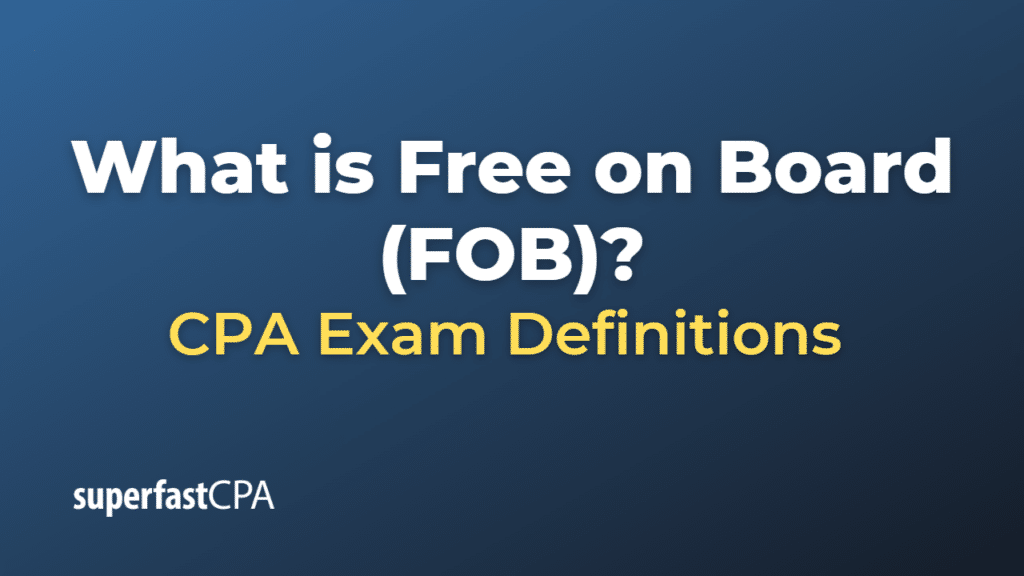Free on Board (FOB)
Free on Board (FOB) is a term used in international trade to determine who is responsible for the transportation of goods, and when the ownership of goods is transferred from the seller to the buyer. It’s a shipping term used in sales contracts that specifies at what point the seller’s obligation ends and the buyer’s obligation begins with respect to the shipment of goods.
There are two types of FOB – FOB destination and FOB shipping point:
- FOB Destination: The seller retains ownership and responsibility for the goods until they are delivered to the buyer’s location. The seller pays for the freight charges and also handles any necessary freight claims.
- FOB Shipping Point (or FOB Origin): The buyer assumes ownership and responsibility for the goods as soon as they leave the seller’s premises. The buyer pays for all freight charges and handles any necessary freight claims.
For example, if you purchase a product from a company and the terms are “FOB destination,” the seller is responsible for all costs and risks associated with transporting the goods to your location. On the other hand, if the terms are “FOB shipping point,” then you, as the buyer, are responsible for the goods as soon as they leave the seller’s location.
The FOB term is part of the internationally recognized commercial terms (Incoterms) established by the International Chamber of Commerce (ICC). The terms clearly define the tasks, costs, and risks associated with the transportation and delivery of goods in international trade.
Example of Free on Board (FOB)
Let’s consider a couple of examples for both FOB Shipping Point and FOB Destination:
Example 1: FOB Shipping Point
Suppose Company A, based in New York, sells a batch of widgets to Company B, located in Chicago. The agreed terms are FOB Shipping Point. Company A packs the goods and sends them off via a freight carrier. As soon as the goods leave Company A’s premises, the ownership transfers to Company B. This means that Company B is now responsible for the freight costs and any potential damage to the goods during transit. If the widgets are lost, damaged, or destroyed on the way, Company B will bear the loss.
Example 2: FOB Destination
Now, let’s consider the same companies with a change in terms. Company A sells another batch of widgets to Company B, but this time the terms are FOB Destination. Company A sends off the goods via a freight carrier. However, in this case, Company A retains the ownership until the goods reach Company B’s premises in Chicago. This means Company A is responsible for the freight costs and any potential damage to the goods during transit. If the widgets are lost, damaged, or destroyed before they reach Company B, Company A will bear the loss.
These examples show how the risk and cost associated with shipping goods can shift depending on whether the terms are FOB Shipping Point or FOB Destination.













